There are a lot of misconceptions about finding the Milky Way in the night sky. This post aims to clear that up. Read on to learn that how to find the Milky Way is actually a lot simpler than you may think! [ExpertPhotography is supported by readers. Product links on ExpertPhotography are referral links. If you use one of these and buy something, we make a little bit of money. Need more info? See how it all works here.]
How Do I Find the Milky Way?
The Milky Way is, in fact, the galaxy that contains the Solar System. The Milky Way is everywhere we look. Up, down, left, right, that is the Milky Way. From Earth, it can be seen as a hazy form of stars in the night sky that the naked eye can barely notice. You can see the Milky Way all year, no matter where you are in the world. It’s visible just so long as the sky is clear and the light pollution is minimal. However, the Milky Way also appears to move in the sky, as the Earth rotates. Have a look at this image below, shot at about 1 am. And compare it to this image, shot at about 4:30 am. The location is almost the same, but you will notice that the Milky Way appears to move. Depending on the time of year, this may or may not be visible, depending on where you are.
How Do You Locate the Milky Way?
To see the Milky Way at night, you need all three of the following: Only when all three of these conditions are met will you be able to see the Milky Way in all its glory. As mentioned before, it also depends on where in the world you are, and what time of year.
Clear Sky
Because you need a clear sky, it is best to look for the Milky Way during the summer months. Check the weather and try to go out on a night when the sky is clear and there are no clouds. Aim for less than 10% cloud cover. To help you out, Clear Sky Chart is a good resource for astronomers. It tells you when the sky will be clear and dark at specific observing sites—including national parks—across North America.
Light Pollution
When looking for the Milky Way, it is extremely important to go to a dark location far from the city. Light pollution is caused by all the excessive artificial light in cities. This extra light reduces the ability to see stars. You may have to drive out more than 150 miles from a big city until you get to the true dark sky, according to the Bortle Dark Sky Scale.
Moonlight
If you are looking for the Milky Way on a night when the moon is shining bright, you will not be able to see it. The sky has to be very dark to see the stars of the galaxy with your naked eye. The presence of the moon will wash out the light of the stars, just like light pollution from the cities.
Understanding Moon Phases for Maximum Shooting Time
We all know how to check the weather, and finding an area with very little light pollution is simple enough to figure out. But understanding the moon’s phases is a little bit more complicated. It is important to find the best times to see the Milky Way. For the best results, we want to photograph the Milky Way during the period of “full darkness.” That is when there is no moon to wash out the stars. Full darkness is at its longest during the new moon and during winter months. So, the best times to see the Milky Way are during times of a new moon, when the moon is completely hidden in the sky. You can also manage to see the Milky Way a week before or after a new moon. But, if the moon is in its first quarter or more, the moonlight will make the sky too bright for you to be able to see the Milky Way. Compare the duration of full darkness (the dark navy blue section at the top) below during summer. It is about 2 hours long. Compare the same duration during the new moon, and you will see the time has reduced by 33 minutes. For maximum photography time, take your photos of the Milky Way during the new moon, in the winter. As soon as astronomical dawn shows its face, those stars will disappear. The apps I use to track this are called Deluxe Moon and Sol, and you can read more about them in our Apps for Night-Time and Milky Way Photography article.
Time of Night
Different times of the night will also affect how you can see the Milky Way. For this, you need to understand the various phases of the night. As the sun sets, the sky transitions into the golden hour and then the blue hour. This time of transition, or twilight, can be divided into three phases. These phases are civil twilight, nautical twilight, and astronomical twilight. They depend on the angle of the sun. Exact sunset and sunrise are when the sun is 0 degrees to the horizon. After sunset comes civil, then nautical, and lastly astronomical twilight when the sun is 18 degrees below the horizon. After this, the sky is the darkest it will be throughout the night. When the sun is beginning to rise again at dawn, the sky again goes through the three phases of twilight. But this time, it is in reverse order. First will come astronomical, then nautical, and finally civil twilight before the sun rises. The best time to see the Milky Way is when it’s darkest, after astronomical twilight at dusk and before astronomical twilight at dawn. This duration is longest in winter months.
What Time of Year is Best to See the Milky Way
If the Milky Way is just the entire collection of stars, how does it change throughout the year? This is because the Milky Way has a core called the Galactic Center. This is its rotational center that is surrounded by dust, gas, and stars. It is the most intense and dramatic part of the Milky Way. So this is what you should aim to capture. It’s from March to September in the Northern Hemisphere, and September to March in the Southern Hemisphere. This is when you will get the most interesting view of the Milky Way. This is due to the way the earth spins around on its axis, and how the angle changes in different seasons. The most interesting angle of the Milky Way is when the Galactic Center is almost vertical to the horizon. This is when the stars look the brightest and it’s the most intense. This photo below was taken in early April, and you can see how the Milky Way is rising horizontally across the sky. Compare that to this photo, taken in the summer, and you will see that it is almost vertical as it appears to rotate. A trained eye can actually tell you when the photo was taken, based on the position of the Milky Way. It starts horizontal in March in the Northern Hemisphere and rotates 180 degrees through the months up until September.
How Do We Know What the Milky Way Looks Like?
The simplest answer to this is because we can look up at the sky and see it. Sure, we only have one perspective of the Milky Way, but it is the only one that matters to us, really. To know what it looks like from the outside, scientists use radio waves, infrared and ultraviolet wavelengths to create a more accurate view of the Milky Way.
How to Find The North Star at Night
It is important to be able to find the North Star in the night sky because that is the star around which all other stars rotate. Finding the North Star is not that hard, and there are a couple of ways of doing it. You can “cheat” and use an app. There are many astronomy apps, such as the following:
GoSkyWatch Planetarium on iOS Starlight on Android SkyView Lite both on iOS and Android
All you need to do is point your phone up at the night sky. It will align the star with your compass and tell you precisely what you’re looking at. The other way, which is also my favorite method, is to go the old-fashioned way. Here, you try to find the North Star by first looking for the group of stars known as the Big Dipper. The Big Dipper looks like it does in the image below. It stands out because it looks like a saucepan with a handle. If you follow the far edge of the pan upwards, it points at Polaris, also known as the North Star. I prefer this method because it helps you to understand the night sky a bit better. And it also means you don’t have to rely on distracting technology.
Conclusion
As you can see, finding the Milky Way is not too tough. All you need is a dark, clear sky that is not obstructed by clouds, light pollution, or the moon. If you know what time of the year to go out and when the night sky is the darkest, you will be able to find the Milky Way in no time. There are also many tools and apps to help you figure this out. Now that you know how to find it, you can start to take some amazing long exposure pictures of the night sky! This article will provide you with excellent base knowledge for how to Photograph the Milky Way. Take a look at our Milky Way Mastery course to take mind-blowing astrophotography images!
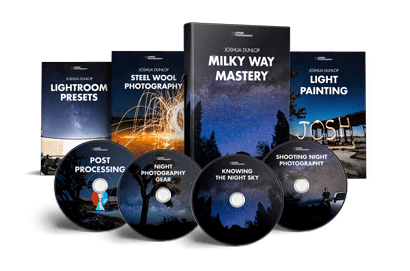

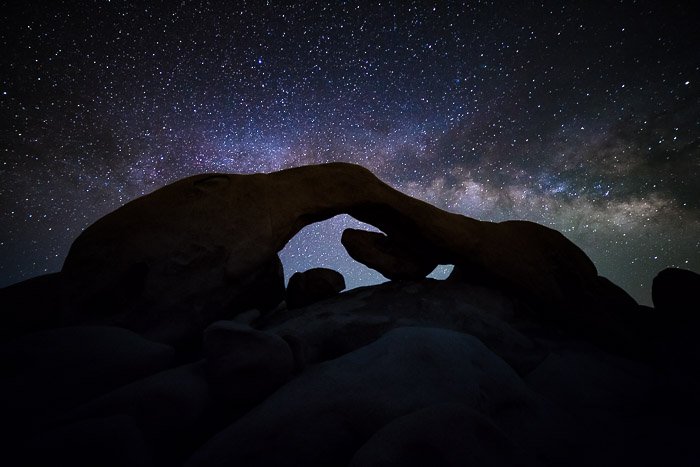

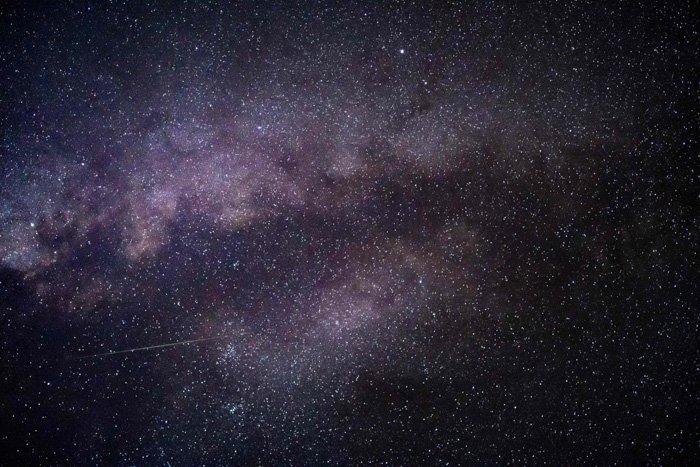
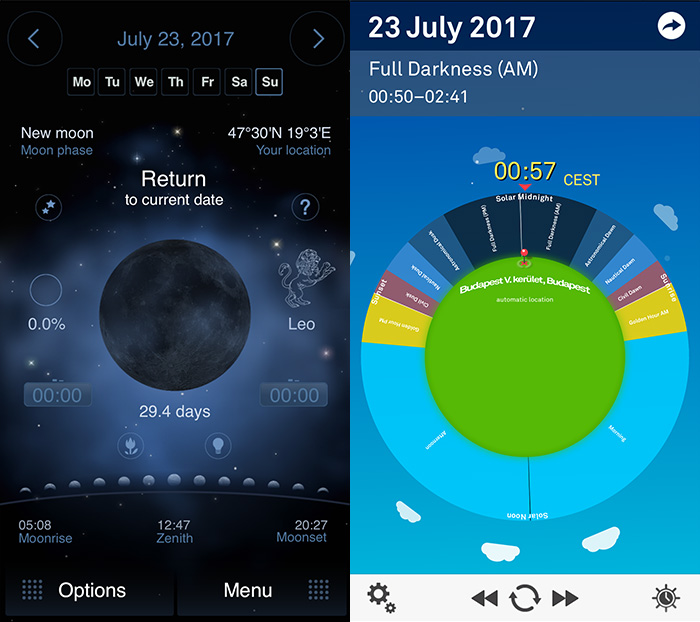
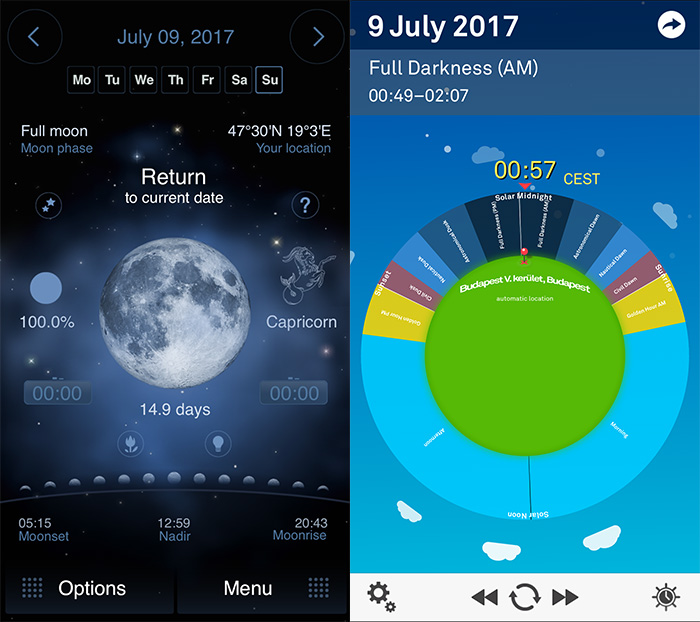
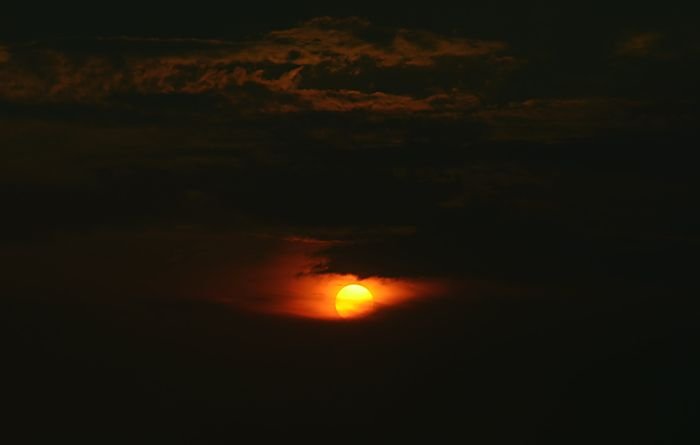
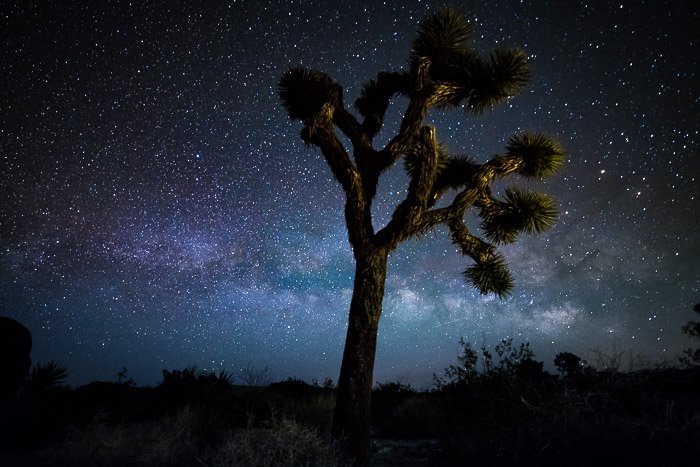
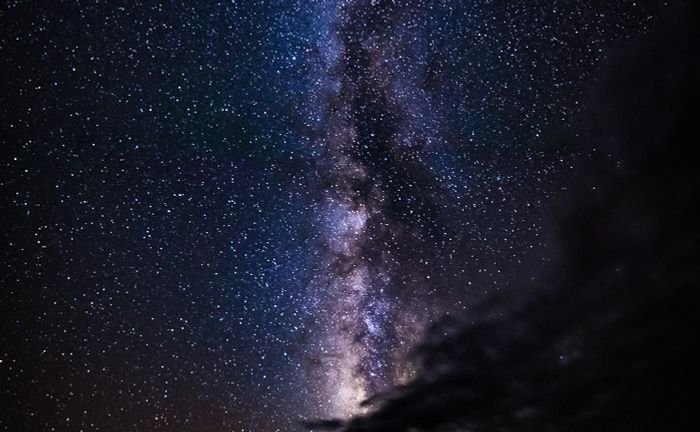
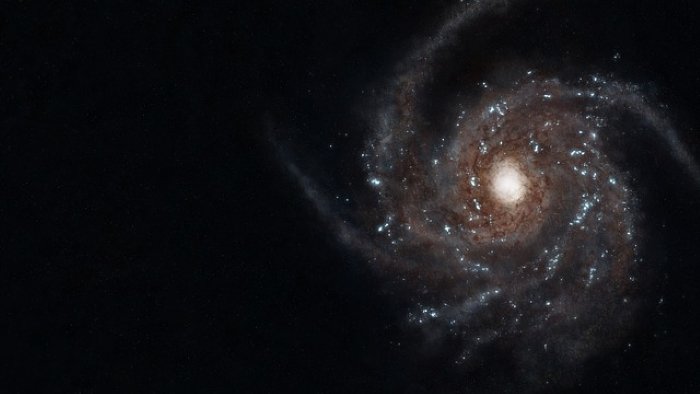
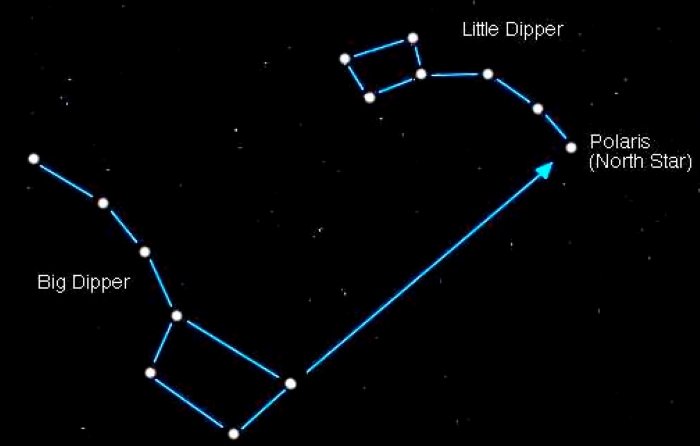


title: “Where Is The Milky Way How To Find It At Night” ShowToc: true date: “2023-02-20” author: “Luann Owens”
There are a lot of misconceptions about finding the Milky Way in the night sky. This post aims to clear that up. Read on to learn that how to find the Milky Way is actually a lot simpler than you may think! [ExpertPhotography is supported by readers. Product links on ExpertPhotography are referral links. If you use one of these and buy something, we make a little bit of money. Need more info? See how it all works here.]
How Do I Find the Milky Way?
The Milky Way is, in fact, the galaxy that contains the Solar System. The Milky Way is everywhere we look. Up, down, left, right, that is the Milky Way. From Earth, it can be seen as a hazy form of stars in the night sky that the naked eye can barely notice. You can see the Milky Way all year, no matter where you are in the world. It’s visible just so long as the sky is clear and the light pollution is minimal. However, the Milky Way also appears to move in the sky, as the Earth rotates. Have a look at this image below, shot at about 1 am. And compare it to this image, shot at about 4:30 am. The location is almost the same, but you will notice that the Milky Way appears to move. Depending on the time of year, this may or may not be visible, depending on where you are.
How Do You Locate the Milky Way?
To see the Milky Way at night, you need all three of the following: Only when all three of these conditions are met will you be able to see the Milky Way in all its glory. As mentioned before, it also depends on where in the world you are, and what time of year.
Clear Sky
Because you need a clear sky, it is best to look for the Milky Way during the summer months. Check the weather and try to go out on a night when the sky is clear and there are no clouds. Aim for less than 10% cloud cover. To help you out, Clear Sky Chart is a good resource for astronomers. It tells you when the sky will be clear and dark at specific observing sites—including national parks—across North America.
Light Pollution
When looking for the Milky Way, it is extremely important to go to a dark location far from the city. Light pollution is caused by all the excessive artificial light in cities. This extra light reduces the ability to see stars. You may have to drive out more than 150 miles from a big city until you get to the true dark sky, according to the Bortle Dark Sky Scale.
Moonlight
If you are looking for the Milky Way on a night when the moon is shining bright, you will not be able to see it. The sky has to be very dark to see the stars of the galaxy with your naked eye. The presence of the moon will wash out the light of the stars, just like light pollution from the cities.
Understanding Moon Phases for Maximum Shooting Time
We all know how to check the weather, and finding an area with very little light pollution is simple enough to figure out. But understanding the moon’s phases is a little bit more complicated. It is important to find the best times to see the Milky Way. For the best results, we want to photograph the Milky Way during the period of “full darkness.” That is when there is no moon to wash out the stars. Full darkness is at its longest during the new moon and during winter months. So, the best times to see the Milky Way are during times of a new moon, when the moon is completely hidden in the sky. You can also manage to see the Milky Way a week before or after a new moon. But, if the moon is in its first quarter or more, the moonlight will make the sky too bright for you to be able to see the Milky Way. Compare the duration of full darkness (the dark navy blue section at the top) below during summer. It is about 2 hours long. Compare the same duration during the new moon, and you will see the time has reduced by 33 minutes. For maximum photography time, take your photos of the Milky Way during the new moon, in the winter. As soon as astronomical dawn shows its face, those stars will disappear. The apps I use to track this are called Deluxe Moon and Sol, and you can read more about them in our Apps for Night-Time and Milky Way Photography article.
Time of Night
Different times of the night will also affect how you can see the Milky Way. For this, you need to understand the various phases of the night. As the sun sets, the sky transitions into the golden hour and then the blue hour. This time of transition, or twilight, can be divided into three phases. These phases are civil twilight, nautical twilight, and astronomical twilight. They depend on the angle of the sun. Exact sunset and sunrise are when the sun is 0 degrees to the horizon. After sunset comes civil, then nautical, and lastly astronomical twilight when the sun is 18 degrees below the horizon. After this, the sky is the darkest it will be throughout the night. When the sun is beginning to rise again at dawn, the sky again goes through the three phases of twilight. But this time, it is in reverse order. First will come astronomical, then nautical, and finally civil twilight before the sun rises. The best time to see the Milky Way is when it’s darkest, after astronomical twilight at dusk and before astronomical twilight at dawn. This duration is longest in winter months.
What Time of Year is Best to See the Milky Way
If the Milky Way is just the entire collection of stars, how does it change throughout the year? This is because the Milky Way has a core called the Galactic Center. This is its rotational center that is surrounded by dust, gas, and stars. It is the most intense and dramatic part of the Milky Way. So this is what you should aim to capture. It’s from March to September in the Northern Hemisphere, and September to March in the Southern Hemisphere. This is when you will get the most interesting view of the Milky Way. This is due to the way the earth spins around on its axis, and how the angle changes in different seasons. The most interesting angle of the Milky Way is when the Galactic Center is almost vertical to the horizon. This is when the stars look the brightest and it’s the most intense. This photo below was taken in early April, and you can see how the Milky Way is rising horizontally across the sky. Compare that to this photo, taken in the summer, and you will see that it is almost vertical as it appears to rotate. A trained eye can actually tell you when the photo was taken, based on the position of the Milky Way. It starts horizontal in March in the Northern Hemisphere and rotates 180 degrees through the months up until September.
How Do We Know What the Milky Way Looks Like?
The simplest answer to this is because we can look up at the sky and see it. Sure, we only have one perspective of the Milky Way, but it is the only one that matters to us, really. To know what it looks like from the outside, scientists use radio waves, infrared and ultraviolet wavelengths to create a more accurate view of the Milky Way.
How to Find The North Star at Night
It is important to be able to find the North Star in the night sky because that is the star around which all other stars rotate. Finding the North Star is not that hard, and there are a couple of ways of doing it. You can “cheat” and use an app. There are many astronomy apps, such as the following:
GoSkyWatch Planetarium on iOS Starlight on Android SkyView Lite both on iOS and Android
All you need to do is point your phone up at the night sky. It will align the star with your compass and tell you precisely what you’re looking at. The other way, which is also my favorite method, is to go the old-fashioned way. Here, you try to find the North Star by first looking for the group of stars known as the Big Dipper. The Big Dipper looks like it does in the image below. It stands out because it looks like a saucepan with a handle. If you follow the far edge of the pan upwards, it points at Polaris, also known as the North Star. I prefer this method because it helps you to understand the night sky a bit better. And it also means you don’t have to rely on distracting technology.
Conclusion
As you can see, finding the Milky Way is not too tough. All you need is a dark, clear sky that is not obstructed by clouds, light pollution, or the moon. If you know what time of the year to go out and when the night sky is the darkest, you will be able to find the Milky Way in no time. There are also many tools and apps to help you figure this out. Now that you know how to find it, you can start to take some amazing long exposure pictures of the night sky! This article will provide you with excellent base knowledge for how to Photograph the Milky Way. Take a look at our Milky Way Mastery course to take mind-blowing astrophotography images!













